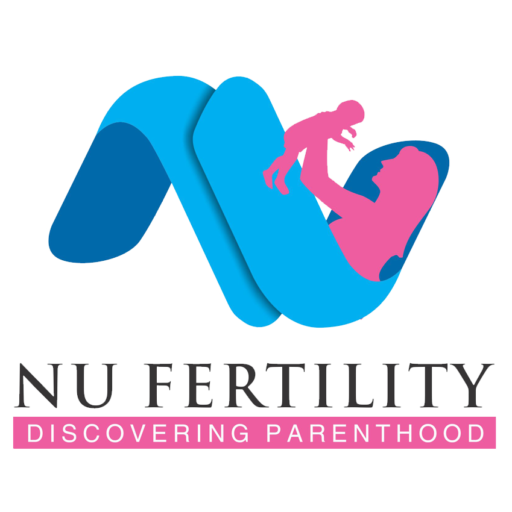Fresh embryo transfers were the only option when in vitro fertilization (IVF) was initially introduced due to the limited progress in cryopreservation techniques. However, over the past four decades, significant advancements in cryopreservation, culture media, and reproductive technologies have made both fresh and frozen embryo transfers (FETs) widely practiced. Nowadays, FETs are generally preferred, depending on the age of the couple, number of oocytes retrieved, quality of embryos, adequacy of the endometrial lining, and hormonal parameters.
Fresh and frozen embryo transfers: Understanding the differences
Fresh embryo transfers:
A fresh embryo transfer is typically scheduled 5 days after the eggs are collected from the patient. In the laboratory, the eggs are fertilized with sperm and the resulting embryo is carefully monitored as it grows. Fresh embryo transfer allows for a shorter time between egg retrieval and transfer into the uterus, increasing the chances of conception.
However, there are certain situations where a fresh embryo transfer is not recommended. If a patient’s progesterone level is high, it can negatively impact the implantation of the embryo, making a fresh embryo transfer unsuitable. Similarly, if a patient is at risk of hyperstimulation from the medications used to stimulate egg maturation, a fresh transfer could pose a danger to the patient.
Frozen embryo transfers:
A frozen embryo transfer typically takes place around 6-8 weeks after the embryo has been frozen. When the patient is ready for the transfer, she will be given medications to simulate a natural menstrual cycle. The FET date is then coordinated with the cycle to improve the chances of successful implantation.
If a patient wants to have her embryos tested for genetic abnormalities, a FET becomes necessary. Preimplantation genetic testing (PGT) is conducted shortly after the retrieval of eggs. A small sample is taken from the embryo for biopsy, and this sample is evaluated for any chromosomal or genetic abnormalities. Once PGT is completed, the embryologist will select only the embryos that are chromosomally normal for transfer. This selective approach significantly increases the likelihood of a successful pregnancy.
- A small sample is taken from the embryo for biopsy, and this sample is evaluated for any chromosomal or genetic abnormalities.
- Once PGT is completed, the embryologist will select only the embryos that are chromosomally normal for transfer.
- This selective approach significantly increases the likelihood of a successful pregnancy.
Frozen embryo transfers can also be utilized for future pregnancies even years later, as embryos can be stored indefinitely. Similarly, if a patient wishes to preserve her fertility due to age, cancer treatment, or other reasons, embryos can be created and stored for later use. When the time is right, a FET can be performed.
The benefits and drawbacks of fresh and frozen embryo transfers

Advantages of fresh embryo transfer
- The waiting time for fresh embryo transfer is shorter as embryos are transferred soon after fertilization.
- The embryo is not subjected to the stress of freezing and thawing.
- Fresh cycles involve the process of ovarian stimulation, which can result in a receptive endometrial lining, if the woman is not a hyper-responder. This, in turn, may enhance the chances of a successful embryo transfer.
Disadvantages of fresh embryo transfer
- Ovarian stimulation during fresh cycles may result in OHSS [Ovarian Hyperstimulation Syndrome], a potentially serious condition marked by enlarged and painful ovaries.
- Due to increased fertility medicines and extra hormones, the presence of higher-than-normal hormone levels in a patient’s system can pose challenges for implantation when using their eggs.
- Fresh transfers are time-critical and need to be synchronized with the natural menstrual cycle, providing limited flexibility in terms of timing.
Advantages of frozen embryo transfer
- FET provides couples who have encountered challenging situations like cancer treatments with the opportunity to have children once their treatments are successfully completed.
- Women can plan pregnancy when they are ready for it. It provides flexibility in relation to planning the timing of embryo transfer
- Reduced risk of Ovarian hyperstimulation syndrome.
Disadvantages of frozen embryo transfer
- Not every embryo can withstand the freezing and thawing process, which could lead to a reduced number of embryos available for transfer.
- Going through frozen embryo transfer can be quite time-consuming.
Factors to consider when deciding between fresh or frozen embryo transfer
- Personal Health: If you have any health concerns, such as being at risk of OHSS, opting for frozen embryo transfer could be a safer choice for you.
- Timing and Flexibility: Consider your own schedule, work obligations, and emotional preparedness for starting a family.
- Success Rates: The success rates for both approaches are quite similar, but there are several factors that can influence the outcome, such as age, embryo quality, and medical history.
The price range for embryo freezing in Bangalore is typically between Rs.20,000 and Rs.40,000. However, it is important to note that this pricing may vary across different hospitals and clinics.
The decision to opt for fresh or frozen embryo transfer is a significant step in your fertility journey. It is important to consult your fertility specialist who can carefully assess your specific circumstances and help you determine the most suitable choice.
Keep in mind that there isn’t a one-size-fits-all solution, and your choice should align with your medical needs, emotional well-being, and your ultimate goal of starting a family. With the assistance of your healthcare team, you can make an informed decision for your path to parenthood.
NU Fertility in Bangalore provides advanced fertility preservation methods. Their dedicated healthcare team ensures exceptional care with precision and expertise in reproductive health. For specialized assistance with embryo transfer, reach out to NU Fertility.
References:
- Fresh and Frozen Embryo Transfers. Society For Assisted Reproductive Technology. https://www.sart.org/patients/fyi-videos/fresh-and-frozen-embryo-transfers/.
- For Women Undergoing IVF, Is Fresh or Frozen Embryo Transfer Best? https://corporate.dukehealth.org/news/women-undergoing-ivf-fresh-or-frozen-embryo-transfer-best.
- Wong, K. M., van Wely, M., et al. (2017). Fresh versus frozen embryo transfers in assisted reproduction. The Cochrane database of systematic reviews, 3(3), CD011184. https://www.cochranelibrary.com/cdsr/doi/10.1002/14651858.CD011184.pub2/full.
- Evans, J., Hannan, N. J., et al. (2014). Fresh versus frozen embryo transfer: backing clinical decisions with scientific and clinical evidence. Human reproduction update, 20(6), 808–821. https://academic.oup.com/humupd/article/20/6/808/2952620?login=false.
Author: Dr. Sneha J



